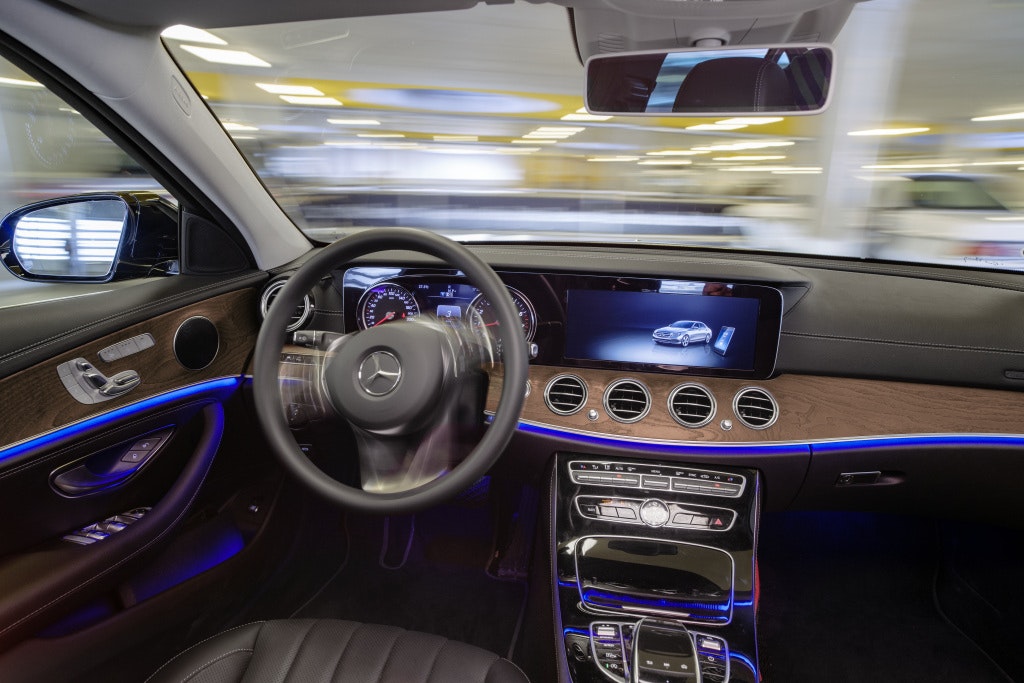“Autoland” Germany is to become a pioneer in autonomous driving
No time right now?
The federal government wants to make Germany the “Autoland” world a pioneer in autonomous driving. This emerges from a draft law passed on Wednesday.
The car looks for a parking space in the multi-storey car park without a driver on board, driverless shuttle buses bring passengers from A to B in the country or in the city: these are conceivable scenarios. The “Autoland” Germany is to become a global pioneer in autonomous driving. That is the goal of the federal government – although it will take some time before the last stage in “robot cars” is reached.
The federal cabinet passed a draft law on Wednesday that should set a legal framework for autonomous vehicles of the so-called level 4. These should be able to drive in regular operation in public road traffic in areas specified by the responsible state authorities until 2022.
“This would make Germany the first country in the world to bring vehicles without drivers from research into everyday life,” said the Federal Ministry of Transport. The draft law also mentions the distribution of letters or documents or company shuttles that handle employee traffic as possible “deployment scenarios”.
“We now want autonomous cars and buses that bring passengers to their destination exactly as needed – and then park themselves in the parking garage”, said Transport Minister Andreas Scheuer (CSU). “It’s not just convenient, it’s safe.” Nine out of ten accidents happened because people made mistakes. “In contrast, self-driving cars are controlled by a computer. He doesn’t let himself be distracted or gets tired. ”Scheuer also sees autonomous driving as an important innovation boost for the German auto industry, which is in a state of upheaval, as he told Deutschlandfunk.
“The fact that the federal government is now clearing the way for entry into autonomous driving is good for Germany as a business location,” said Hildegard Müller, President of the Association of the Automotive Industry. The technology for automated functions in traffic will continue to develop dynamically over the next few years.
Different levels of autonomous driving
A distinction is made between different levels of autonomous driving. With “fully automated driving” – level 4 – the computer can take over complete control of the car in defined applications, according to the ministry. If the automation mode has to be exited, the system asks the driver to take over. If there is no response, the system can automatically bring the vehicle to a stop on the hard shoulder, for example. Driverless applications should also be made possible in which it is no longer possible to take over the driving task. However, passengers could at least initiate the emergency stop.
Green traffic expert Stefan Gelbhaar said that technical supervision was still required at level 4. The technology would therefore be particularly useful in local public transport and could take an important step towards the goal of achieving more mobility with less traffic.
Also interesting: VW relies on Microsoft Cloud for automated driving
Level 4 is the preliminary stage to almost completely autonomous driving, level 5. According to the ministry, the vehicle moves without a driver. People become passengers and they no longer have to intervene in the driving process. It may take some time before that happens, the automotive association VDA does not expect this to happen before 2030. This is also due to the complex technology.
According to the ministry, the state of the art is currently level 2, semi-automated driving with the use of assistance systems. At level 3, the computer can independently take over driving tasks such as changing lanes when driving on motorways.
The draft law that has now been passed by the cabinet is still controversial within the government regarding data protection regulations. The Justice Department had raised concerns. It is about the question of whether data such as routes can be transmitted to the Office for the Protection of the Constitution or the Federal Criminal Police Office on request via the Federal Motor Transport Authority.
The liability system is to be retained
On the question of liability, a spokesman for the Association of the German Insurance Industry said it was correct that the draft law should retain the existing and proven liability system for autonomous driving as well. “If a person is injured or something is damaged while driving a car, the owner’s motor vehicle liability insurance will compensate for the damage. In particular, this prevents the traffic victim from having to prove in court who or what exactly caused the accident. “
Nevertheless, after an accident with an autonomous vehicle, it must be possible to determine who or what caused the accident. In the case of vehicles with autonomous driving functions, the search for the source of the error is becoming more complex – has the driver made a mistake, the manufacturer or an IT service provider?
Open questions about data protection, for example, are now to be clarified in the parliamentary procedure. The law is expected to be passed before the summer break. The Federal Council still has to agree. Scheuer press the gas again before the federal election, commented the FDP transport politician Oliver Luksic: “We need legal certainty and a competitive framework in order to leverage the enormous potential.”
From the perspective of the digital association Bitkom, Germany can create “a blueprint” for other countries in Europe and worldwide. Bitkom President Achim Berg said it was about bringing innovative technologies out of the laboratory and into everyday life. dpa



